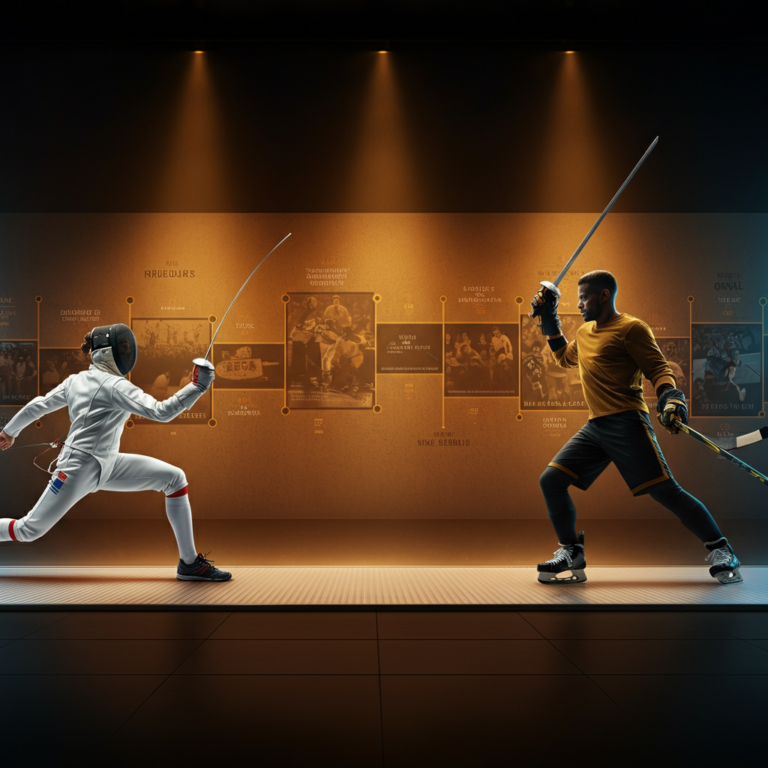Sabres have long captured the imagination of sports enthusiasts and history buffs alike. Originally a weapon of war, the sabre has evolved into a symbol of precision, skill, and sportsmanship. Its iconic shape and storied history make it a fascinating subject to explore, especially in the realm of sports. But how exactly do sabres transition from the battlefield to the sports arena? And what makes them such a compelling part of athletic competition? This blog dives into the rich history, evolution, and future of sabres in sports while highlighting their cultural impact and the athletes who wield them.
The History of Sabres in Sports
The sabre’s origins stretch back centuries, rooted in its function as a lightweight, curved weapon used by cavalry on horseback. Its design prioritized speed and efficiency in close combat, making it a favorite among skilled soldiers. Over time, the sabre took on an air of prestige and became a representation of honor and valor World of Sabres in Sports.
Its transition into sports began with fencing—a competitive practice that evolved from historical swordsmanship. Fencing incorporated the sabre as one of its three primary disciplines (alongside the foil and épée). The sport retained much of the elegance and precision that made the sabre such a feared weapon, but transformed it into a platform for skillful competition rather than combat.
The Evolution of Sabres in Sports
Today, sabres are most prominently associated with fencing but feature in other sports and symbolic traditions as well. Here’s a look at different ways sabres continue to play a role in modern sports:
Fencing
The sabre discipline in fencing is fast-paced and exciting, emphasizing quick attacks and lightning reflexes. Unlike foil or épée fencing, sabre fencers can score points with either the edge or the tip of the weapon, making for an aggressive and high-energy match. The rules encourage offensive play, and competitors aim to claim points by striking their opponents above the waist.
Ice Hockey
At first glance, ice hockey may not seem connected to sabres, but fans of the Buffalo Sabres—a professional NHL team—know better. Named after the iconic weapon, the team’s branding embodies the strength, precision, and honor represented by the sabre. While the sabre itself is not part of gameplay, its spirit lives on in the ethos of the team.
Martial Arts and Demonstrative Sports
Various martial arts employ sabres or similar weapons in choreographed routines and performances, focusing on technique, fluidity, and discipline. These demonstrations often draw from historical techniques while showcasing the artistry of weapon-based martial forms.
The Physical and Mental Demands of Sabres in Sports
Whether in fencing or related sports, mastering the sabre requires both physical and mental prowess. Here are the core skills that competitors hone:
- Agility: Sabre sports demand quick footwork and rapid changes in direction to outmaneuver an opponent or defend against an attack.
- Hand-Eye Coordination: Success with the sabre often depends on impeccable timing and precise movements to land strikes or parries.
- Strategic Thinking: Fencers, for example, rely on mental tactics to predict their adversaries’ moves and counter them effectively.
- Stamina and Focus: Competitors must maintain high energy levels and razor-sharp concentration throughout matches, which are as much mental battles as physical ones.
The combination of these elements makes sabre sports not only physically demanding but also intellectually engaging—qualities that add to their universal appeal.
Notable Athletes and Moments in Sabre Sports
Sabre sports have seen their fair share of legendary athletes and unforgettable moments that have shaped their legacy.
Famous Fencers
- Aron Szilágyi (Hungary): Szilágyi is one of the most decorated sabre fencers in history, winning gold medals at the 2012, 2016, and 2020 Olympic Games. His mastery of technique and tactical acumen has set a benchmark for generations to come.
- Mariel Zagunis (USA): A two-time Olympic gold medalist, Zagunis is one of the most successful American sabre fencers, breaking barriers and inspiring young athletes worldwide.
Iconic Competitions
The FIE (International Fencing Federation) World Championships and the Olympic Games regularly showcase the world’s top sabre competitors. These events bring the intensity and drama of sabre sports to a global audience, sparking interest and admiration.
Sabres in Popular Culture
The appeal of sabres extends far beyond the sports arena. Their symbolism has played a prominent role in movies, literature, and pop culture at large.
Movie Appearances
Sabres have made memorable appearances in films ranging from historical epics to swashbuckling adventures. Think of the sabres wielded in classic pirate films or the honor-driven sword fights depicted in samurai cinema.
Literature
Many works of historical fiction and fantasy include sabres as a key element, emphasizing their connection to chivalry, bravery, and skill. They appear in tales of gallant warriors and dueling nobles, cementing their place in the collective imagination.
A Symbol of Honor
Even today, sabres are often used in ceremonial contexts, from military parades to honor guards. Their presence invokes a sense of tradition and respect.
The Future of Sabres in Sports
What’s next for sabres in the world of sports? Advancements in technology and innovation are poised to transform how sabres are designed and used. For instance:
- Enhanced Equipment: Lightweight materials and advanced engineering may lead to sabres that offer better precision and comfort for athletes.
- Digital Integration: Virtual reality (VR) and augmented reality (AR) technologies could bring fencing and other sabre-based sports to a wider audience through interactive, immersive training experiences.
- Broader Access: Grassroots initiatives and programs may increase accessibility to sabre sports, encouraging more individuals to pick up a sabre and join the community.
Why the Sabre Still Captivates
Sabres remain a timeless and powerful symbol of competition, honor, and skill. Beyond their historic roots, they inspire athletes to push their limits, challenge their minds, and showcase the best of what sports can offer.
